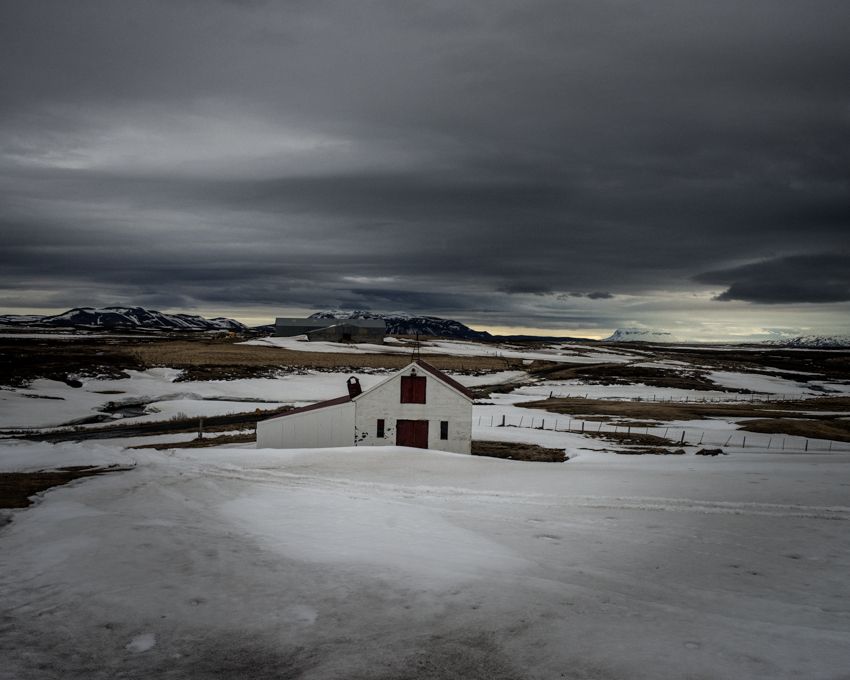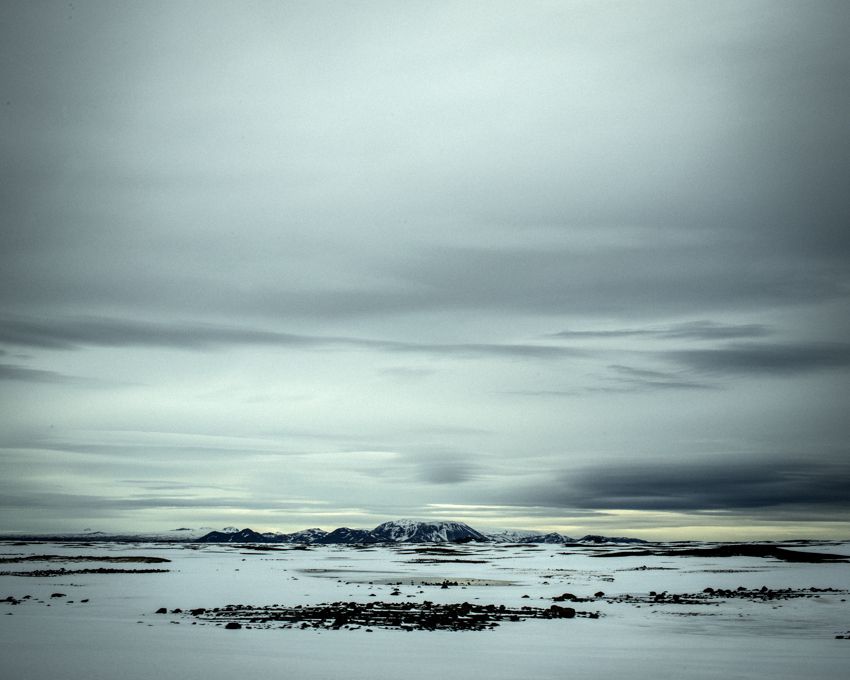Whenever the farmers from the northeast corner of Iceland discuss global warming, a topic frequently covered by the media, they scornfully roll their eyes because, after all, they have just experienced an exceptionally harsh winter: 2013 was markedly colder here than in preceding years, with copious amounts of snow and ferocious storms.
People here don’t really challenge the scientific theories being put forward on the subject of global warming, because over the past decade their winters were milder compared to the previous century, and they would like to believe that this past winter was the exception. All the same, it’s fun to scoff a little at the media and the scholars who think they always know best.
The inhabitants of Myvatn, a village of a few dozen homes hidden away in the mountains, along a lake, proudly state that Route 1, the region’s main thoroughfare, stays open all year round, whatever the weather. To ensure the road stayed open this past winter, they had to work relentlessly clearing the snow. Elvar, a 39-year-old snowplow operator, says he has never experienced such conditions.
“I had to get up at 5 every morning to clear my section of the road, in the dark. Then, go back home around 8, get in my car and drive my children 45 km to the only school still open in the district. On the way back, gusting winds were already blanketing Route 1 in snow, so it was time to get back to work, clearing the road. Same story in the evening when I had to fetch the children from school and get them home.”
In February, Elvar was able to enjoy a two-week break from his twice daily round trips. The children’s school was closed for several days in a row due to heavy snowfalls. The family remained cooped up inside because the house was buried in snow right up to the roof.
Still, this spring of 2013 is abnormally cool and wet. The sheep breeders, who usually let the animals out in the meadows starting in mid-May, were forced to keep them penned up inside until June. Such delays present an array of logistical problems. The newborn lambs take up a lot of space inside, when they should be frolicking around in the fields. The shepherds are already worried about a shortage of fodder for next year. As a rule, the highlands are already green and in full bloom by mid-May. But this year the snow is still deep in places at the end of May, the ponds and streams are partially frozen, the trails are waterlogged, the shrubs are still bare and the fields are still showing the old growth from last autumn.
On May 2nd, the Bruarjokull weather station, in the east of the country, registered a temperature of 21.7 below zero, a record for this time of year.
Such erratic climate changes could present challenges for the local authorities who are trying to promote winter tourism in this part of Iceland: thus far, tourists only visit in the summer. Elvar, the snowplow operator, laughingly states that if the tour operators are honest, they will warn their clients of the possibility of spending their vacation confined to their hotel rooms, since all outdoor activities would, at times, be downright dangerous.
Nevertheless, on this last weekend in May, the population of Akureyri, the region’s county seat, decided to throw a big party as if spring had already arrived. Everyone came lightly dressed, some formally, others in eccentric outfits, to drink, laugh and dance in the streets until morning. People here don’t say “until dawn”, because it never really gets dark at this time of year. After a few hours, the folks most sensitive to the cold have cheated a little by fetching hats and anoraks, while the hardiest warm themselves with shots of alcohol and sausages. One particular young man from the town is the coldest of all. Earlier in the evening, his pals grabbed him, tied him up, naked, in the back of a pick-up truck and drove all around town in the icy wind. This shock treatment is meant to toughen him up before he gets married the next day. According to his friends, sitting up front in the warm cab of the truck, this is good preparation for the life of servitude that awaits him, starting tomorrow. When it becomes too cold, the boy is finally liberated and pushed into a welcoming bar.
The celebration was a success, but it didn’t hasten the arrival of spring. The weather forecast for the following week: rain and wind.
Translated from French by Anne Thurow.
| Attachment | Size |
|---|---|
| 27.5 KB |



